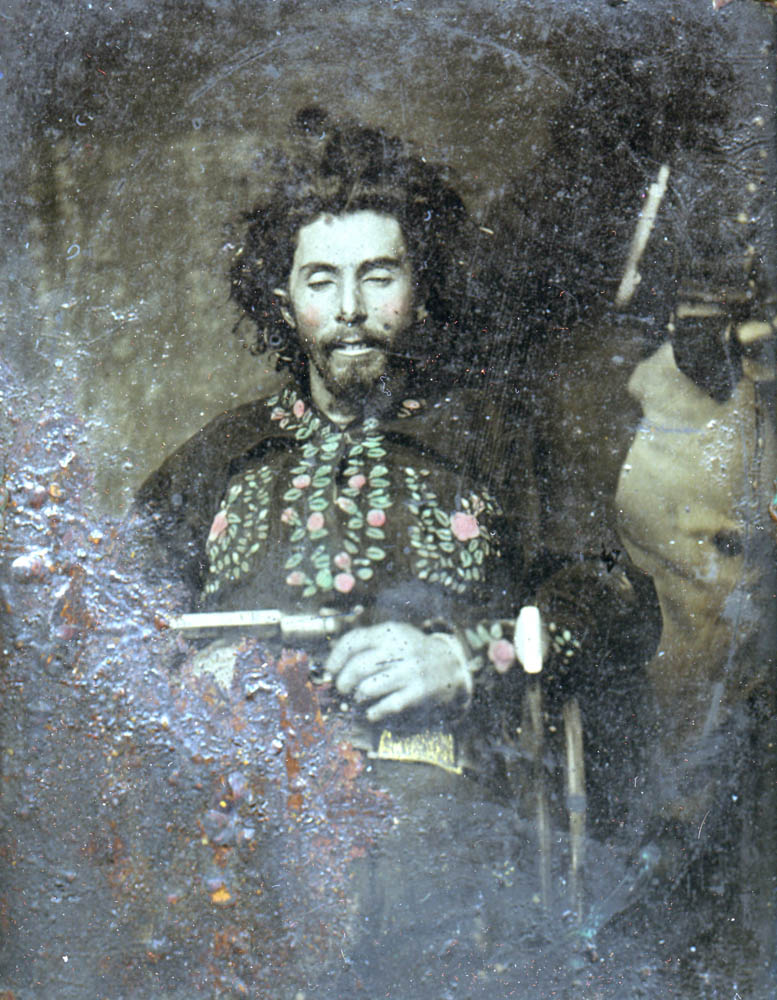William T. “Bloody Bill” Anderson was born in Kentucky in 1839; he migrated with his family from Missouri to the Council Grove, Kansas area before the war. By the time he turned 21 he was accompanying wagon trains on the Santa Fe Trail, selling stolen horses. With the start of the Civil War, Anderson began a career as a bandit, first with antislavery Jayhawkers, and later with proslavery Bushwhackers.
In July 1862, he returned to Missouri with his brother Jim, where they resumed their guerrilla warfare against Unionists in the area. His notoriety as a guerrilla began in 1863 when he joined the forces of William Quantrill. Believing the collapse of a Union jail in Kansas City that killed one sister and injured two others was a deliberate act by Union forces, Anderson joined forces with Frank James, Cole Younger and others and played a leading role in Quantrill’s raid on Lawrence, Kansas on August 21, 1863. During the raid approximately 200 men and boys were killed and the business district burned. On October 6, 1863, he helped Quantrill massacre Union General James Blunt’s column at Baxter Springs, Kansas.
On September 27, 1864, Anderson and his gang stopped a train near Centralia, Missouri, removed 24 Union troops, stripped and shot all but one in cold blood. Later that day they destroyed three companies of the 39th Missouri Infantry led by Major A.V.E. Johnston. Anderson and his guerrillas went on to serve with Confederate generals Sterling Price and Joseph Shelby in their unsuccessful raid into Missouri in the fall of 1864. When near Albany, Missouri on October 27, 1864, Anderson was caught in an ambush and killed, and his body transported to Richmond, Missouri, where it was identified by documents found in the pockets, including a photograph of Anderson and his wife, and a lock of his infant daughter’s hair.
Dr. Richard B. Kice, of Richmond, Missouri, took several photographs of Anderson after his death. Anderson was photographed with a Union soldier holding his head up, wearing a “guerrilla shirt,” and with a pistol propped in his hand. His body was placed on public exhibition in Richmond. He was decapitated, with his head placed on top of a telegraph pole, and his body was dragged through the streets before being buried in an unmarked grave.
Tintype by Richard Kice, Richmond, Mo.
Image Courtesy Wilson’s Creek National Battlefield; WICR 30222




